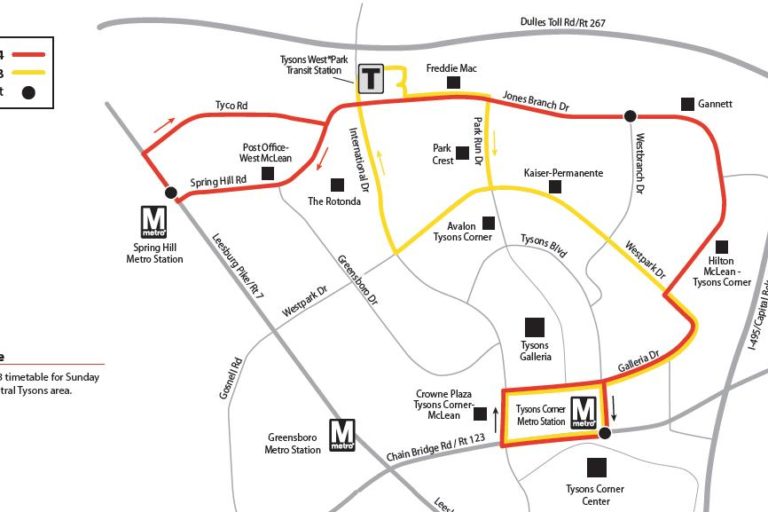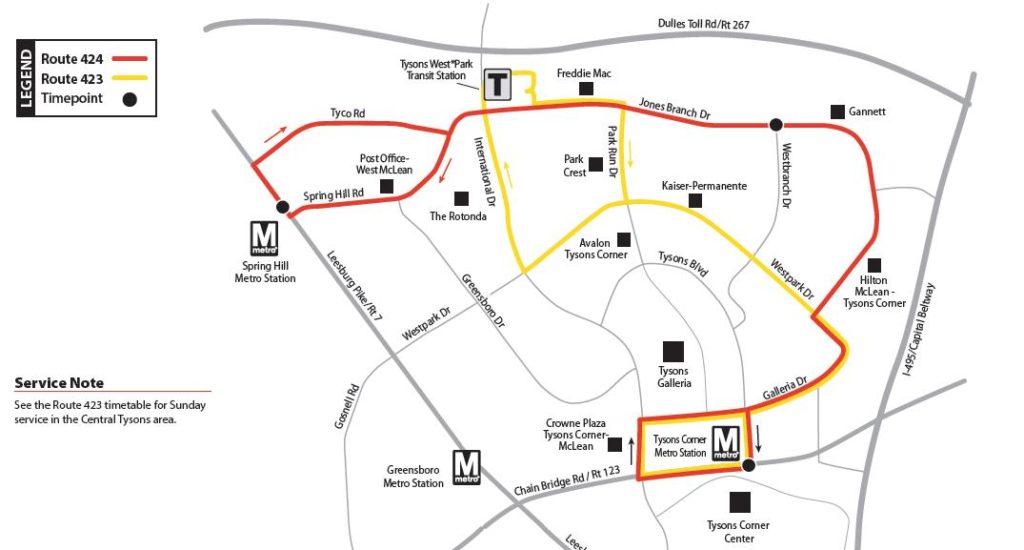Last weekend Fairfax Connector implemented Saturday service on the 424 bus in Tysons, one of three circulator routes which were implemented with the Silver Line opening to better connect areas of Tysons away from the metro stations. Additional transit in Tysons is a good thing, people don’t stop depending on transit on the weekends, we continue to live, work, and play.
The schedule for Saturday will start at 7am and end at 8pm (with the last loop starting at 7:20). At 35 minute headways the buses are a long way from a high frequency option, but due to the low density and limited usage it is understandable that Fairfax will only be allocating a single bus.
Unfortunately, the lack of real time bus information may be forcing slower service than needed. Good circulator routes don’t depend on time-tables, they run as frequently as possible making a loop around their service area. Just like a train pulling into a metro station, there is no point to stopping and waiting if you can make more frequent trips by continuing and reducing time checks to the bare minimum. This is not possible when real time bus information is unavailable because it leaves riders unsure when a bus will be available.
If Fairfax Connector had real time data available to riders — they are looking to implement soon — they would be able to improve the 424 weekend route, with no change in operation cost and no additional buses. The bus route itself could run on a 25 minute loop by removing the time checks. Instead of 21 laps, the bus could run 30 laps per Saturday. The difference between 35 minutes and 25 minutes may seem trivial but it is everything.
A person on foot can walk from Spring Hill metro to Tysons Corner metro station in 29 minutes. If you can out walk the main coupling of the bus between the length of the headway, that bus will not be successful. Yes, a person could make it faster between stations if they time it just right, but people can’t always live life on half hour intervals. If you are coming home on the metro and need the 424 to take you the final mile, the chances that the train and the bus align on timing are limited. Running the bus more frequently doesn’t mean a bus will be there everytime, but it incrementally makes the chances of catching a bus, or lessening the wait, more likely. This holds true for the dozens of routes all over Fairfax which must run on an elongated time check system as well.
The most critical update needed for transit in Fairfax isn’t physical, it isn’t more buses, more trains, or BRT. What we need immediately before all of that is real time data that can help improve the efficiency of each bus and reduce headways and get the most out of our transit dollars.



